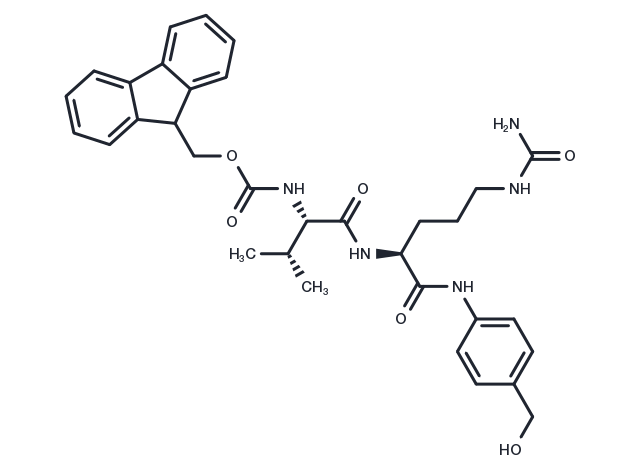Powder: -20°C for 3 years | In solvent: -80°C for 1 year


Fmoc-Val-Cit-PAB is a linker for antibody-drug-conjugation (ADC).

| Pack Size | Availability | Price/USD | Quantity |
|---|---|---|---|
| 25 mg | In stock | $ 29.00 |


| Description | Fmoc-Val-Cit-PAB is a linker for antibody-drug-conjugation (ADC). |
| Molecular Weight | 601.69 |
| Formula | C33H39N5O6 |
| CAS No. | 159858-22-7 |
Powder: -20°C for 3 years | In solvent: -80°C for 1 year
DMSO: 123.75 mg/mL (205.67 mM)
You can also refer to dose conversion for different animals. More
bottom
Please see Inhibitor Handling Instructions for more frequently ask questions. Topics include: how to prepare stock solutions, how to store products, and cautions on cell-based assays & animal experiments, etc.
Fmoc-Val-Cit-PAB 159858-22-7 Others inhibit Antibody-drug conjugates linkers ADC Linkers FmocValCitPAB Inhibitor Fmoc Val Cit PAB inhibitor
